OVERVIEW OF QUESTIONS AND ANSWERS SERIES
January to June 1998
| January | February | March | April | May | June |
January
January 1998
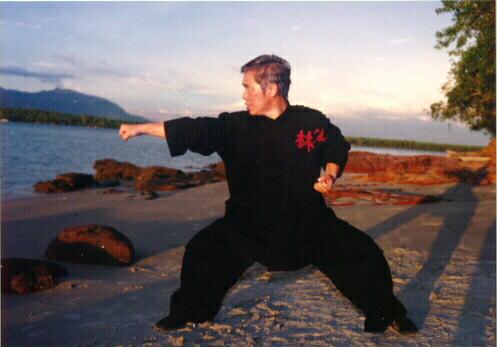
According to Chinese medical philosophy, the mind and body is one unity, and the fundamental unit of life is energy, which the Chinese call chi. This of course contrasts distinctly with behavioristic philosophy which often denies the mind its existence and relegates it to a function of the mechanical brain. This alienation of the mind in western medicine and psychology, I believe, is a main cause for the failure in addressing many physical and psychological disorders.
Click here to enter.
February
February 1998

If you examine the highest teachings of all great religious and spiritual teachers, you will find that they say the same thing, albeit in different words. In Buddhism, this ultimate reality is called the eternal Buddha (not the Buddha in the physical body of Guatama Buddha, just like not God the Son in the physical body of Jesus Christ); in Taoism it is called the Tao or the Great Void.
Click here to enter.
March
March 1998

The eastern approach to building speed and strength is quite different from that of the west. Hence you may find my answer unusual. Philosophically speaking, any exercise can be used to build speed and strength, because speed and strength are "skills" (or "gong" in Chinese), in contrast to "techniques" ("fa") which correspond to the physical form of the exercise. For example, executing a thrust punch or a side kick is a technique; how fast and powerful the punch or kick is involves skill.
Click here to enter.
April
April 1998 (Part 1)
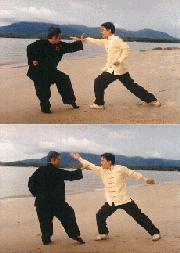
Then why the overwhelming majority of kungfu students and instructors today all over the world cannot spar with kungfu patterns? I myself do not like to beleive it is true, but it is true: today the art of kungfu for combat is virtually lost -- with very, very rare exceptions, and for various reasons these exceptional masters are not willing or prepared to teach. Since 50 years ago, the norm of teaching and learning kungfu has been to perform kungfu sets.
Click here to enter.
April 1998 (Part 2)
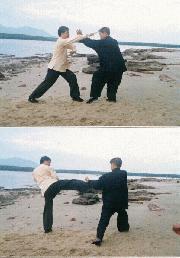
Philosophically, I strongly hold that for any art to be called kungfu it must be capable of being applied for self defence, without the need to borrow or steal techniques from other martial arts. The crucial point is not whether a kungfu exponent would win or lose in a combat, but that he should be able to apply kungfu in combat using the typical kungfu patterns he has learnt.
Click here to enter.
May
May 1998 (Part 1)
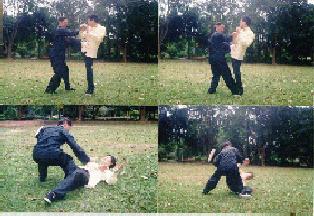
This is one reason why there are so few masters although there may be many people practising the art. Some even start to teach chi kung or Taijiquan after practising for only a few months, and if they carry on teaching for a few years (during which time they seldom improve their own performance) they would call themselves masters, although actually their level of attainment is low.
Click here to enter.
May 1998 (Part 2)
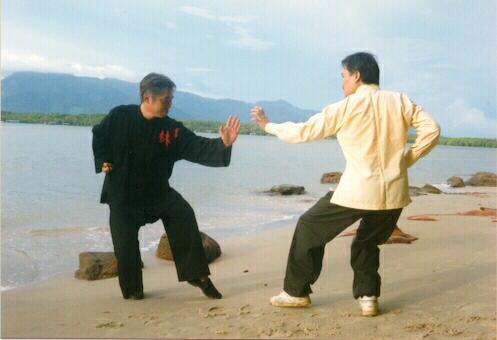
Striking back is not difficult, but subduing opponents without hurting them demands not only great skills but a big heart. Perhaps you can help your students much by telling them that if they sincerely believe kungfu training is a programme of personal development, they will be doing themselves more (psychic and spiritual) harm than they do to their partners or real opponents if their intension is to hit back maliciously.
Click here to enter.
June
June 1998 (Part 1)
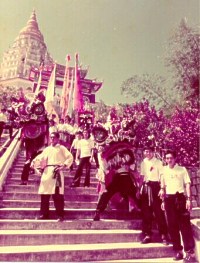
To ordinary people, the phenomenal world is full of myriad entities, yet to the enlightened and the awakened it is empty -- devoid of real substance as everything is merely a creation of mind. Indeed the word "phenomenal" means appearances. The entities we ordinarily see are only appearances, and they appear differently to different beings, such as humans, bacteria and faries, because of their different conditions.
Click here to enter.
June 1998 (Part 2)
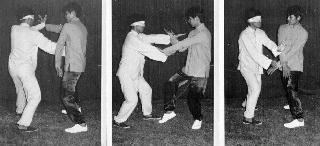
It is perhaps worthwhile to add that Choy-Li-Fatt and Wing Chun Kungfu compliment each other very well. While Wing Chun Kungfu is excellent for close combat, and fighting at masters' level, it is not so suitable for mass fighting. Because of its innate characteristics, even a Wing Chun master, using purely Wing Chun techniques, will have difficulty fighting to escape an ambush, whereas Choy-Li-Fatt Kungfu, with its long range techniques and wide-sweeping movements, is well suited for this purpose. We (disciples of Choe Family Wing Chun) are lucky to have the advantage of this Wing Chun-Choy-Li-Fatt combination.
Click here to enter.
